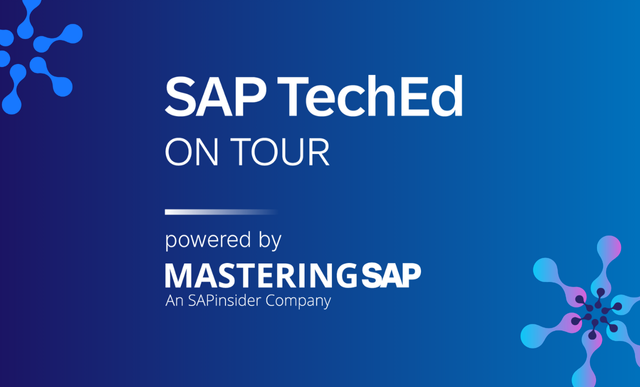SAP Payroll
Filter By
Browse By
- SAP Analytics and AI
- SAP Application Development and Integration
- All SAP Application Development and Integration
- SAP ABAP
- SAP ABAP Development Tools
- SAP ABAP Test Cockpit
- SAP API Management
- SAP BAPI
- SAP Basis
- SAP BRF
- SAP Business Application Studio
- SAP CMS
- SAP Design Studio
- SAP Development Tools
- SAP DevOps
- SAP EAI
- SAP EDI
- SAP Extension Suite
- SAP Fiori
- SAP Fiori Elements
- SAP Integration Suite
- SAP Low Code Application Development
- SAP Low Code Automation
- SAP Netweaver
- SAP Release Management
- SAP UI5
- SAP Web Application Server
- SAP Web IDE
- SAP Business Process Management
- SAP Center of Excellence
- SAP CIO
- SAP Customer Experience
- SAP Data and Data Management
- All SAP Data and Data Management
- SAP BW
- SAP BW/4HANA
- SAP Crystal Reporting
- SAP Data Archiving
- SAP Data Center
- SAP Data Governance
- SAP Data Integration
- SAP Data Migration
- SAP Data Quality
- SAP Data Services
- SAP Data Strategy
- SAP Data Visualization
- SAP Data Warehouse Cloud
- SAP DMS
- SAP Document Control
- SAP EIM
- SAP ETL
- SAP ETL Tools
- SAP HANA
- SAP HANA Administration
- SAP HANA Deployment Infrastructure
- SAP HANA Studio
- SAP Master Data
- SAP Master Data Governance
- SAP MDM
- SAP Enterprise Architect
- SAP Enterprise Asset Management
- SAP ERP
- SAP Finance
- All SAP Finance
- SAP Accounting
- SAP AR AP
- SAP Asset Accounting
- SAP Billing Systems
- SAP BPC
- SAP BRIM
- SAP Cash Management
- SAP Central Finance
- SAP Controlling
- SAP COPA
- SAP Cost Center Accounting
- SAP e-invoicing
- SAP FICO
- SAP Finance Automation
- SAP Financial Closing Cockpit
- SAP Financial Consolidation
- SAP Financial Planning
- SAP FX Risk
- SAP General Ledger
- SAP Global Tax Management
- SAP Hyperion
- SAP Order to Cash
- SAP Payment Processing
- SAP Profitability Analysis
- SAP Rebate Management
- SAP S/4HANA Finance
- SAP Universal Journal
- SAP Governance Risk and Compliance
- SAP Human Capital Management
- SAP Intelligent Technologies
- SAP Platform and Technology
- All SAP Platform and Technology
- SAP Business Technology Platform
- SAP Cloud Connector
- SAP Cloud Integration Platform
- SAP Cloud Migration
- SAP Cloud Platform
- SAP Cloud Providers
- SAP Cloud Strategy
- SAP Container Platform
- SAP Digital Asset Management
- SAP Digital Integration Hub
- SAP Digital Signature
- SAP HANA Enterprise Cloud
- SAP HEC
- SAP Hyperscalers
- SAP Infrastructure
- SAP Messaging
- SAP Smart Forms
- SAP Quality and Testing
- SAP Security
- SAP Spend Management
- SAP Supply Chain Management
- All SAP Supply Chain Management
- SAP APO
- SAP Asset Management
- SAP Business Network
- SAP Digital Manufacturing Cloud
- SAP Digital Twin
- SAP EWM
- SAP IBP
- SAP Inventory Management
- SAP Label Printing
- SAP Logistics
- SAP Manufacturing
- SAP Manufacturing Automation
- SAP MES
- SAP MII
- SAP MM
- SAP MRO
- SAP MRP
- SAP Order Management
- SAP Plant Maintenance
- SAP PLM
- SAP Production Planning
- SAP S&OP
- SAP SD
- SAP SPM
- SAP Supply Chain Planning
- SAP Track and Trace
- SAP Transportation Management
- SAP System Administration
What Is SAP Payroll?
Payroll is such a vital component to employee satisfaction that many companies are hesitant to make any changes — even if there are potential benefits to updating processes or technologies. This is reflected in SAP Payroll offerings — the traditional on-premise SAP Payroll and the cloud-based SAP SuccessFactors Employee Central Payroll. The cloud offering is essentially identical to the on-premise offering, except for where the servers are hosted.
SAP has hinted at plans to build a next-generation payroll solution, but that often takes a backseat to investments in other areas of its human resources (HR) technology suite.
Making an error on an employee’s paycheck is one of the fastest ways to receive a notice of resignation, so the reticence to change payroll at many companies, and the motivation for SAP to build a new payroll system, is explainable.
What Is SAP Payroll?
Payroll is such a vital component to employee satisfaction that many companies are hesitant to make any changes — even if there are potential benefits to updating processes or technologies. This is reflected in SAP Payroll offerings — the traditional on-premise SAP Payroll and the cloud-based SAP SuccessFactors Employee Central Payroll. The cloud offering is essentially identical to the on-premise offering, except for where the servers are hosted.
SAP has hinted at plans to build a next-generation payroll solution, but that often takes a backseat to investments in other areas of its human resources (HR) technology suite.
Making an error on an employee’s paycheck is one of the fastest ways to receive a notice of resignation, so the reticence to change payroll at many companies, and the motivation for SAP to build a new payroll system, is explainable.
Vendors such as Deloitte offer SAP Payroll and SAP SuccessFactors Employee Central Payroll implementation and consulting services. There are companies, such as Alight, that also administer payroll services for an organization partially or completely with the option to use technologies like SAP Employee Central Payroll.
Many SAP customers also use non-SAP payroll systems that integrate with SAP systems such as ADP or Paychex.
Key SAP Payroll Considerations for SAPinsiders
- Mainstream maintenance for on-premise SAP Payroll is scheduled to end in 2027. Current SAP Payroll customers will have to consider the option of moving to SAP SuccessFactors Employee Central Payroll in the cloud, which currently has no end-of-maintenance date, or a non-SAP payroll product. Staying with on-premise SAP Payroll beyond 2027 will require extra maintenance fees or third-party maintenance services.
- Payroll has slower cloud adoption than other HR technologies. In our recent HR Technology State of the Market report, among surveyed respondents that indicated they were using payroll technology, 18% indicated that the system was currently deployed in the cloud, the lowest cloud adoption rate of any technology mentioned. Cloud payroll adoption is rising, with another 19% currently implementing a cloud payroll solution. However, nearly 11% of respondents indicated having no plans for payroll in the cloud, more than double the proportion of any other technology.
- Payroll accuracy is a top HR objective. In the same HR Technology State of the Market report mentioned above, reducing errors in time and payroll was the top HR technology strategy objective among respondents, which were predominantly HR professionals. Getting payroll right isn’t just a concern for the finance and compliance departments. Those in HR know the importance it holds to their ability to retain talent.
939 results
-

Learn How to Process Wage Types in Personnel Calculation Rules Based on Payroll Periods
Published: 27/November/2012
Reading time: 9 mins
You can use personnel calculation rules (PCRs) for automatic calculation of employee payments or deductions when the calculation rule for the wage type depends on the payroll period. See how you can call a payroll period in a PCR to process a wage type for a particular payroll period during a payroll run. You can...…
-

When Should Your HR Reporting Strategy Include SAP BW?
Published: 15/January/2007
Reading time: 30 mins
In some companies, a transactional system such as R/3 may no longer be enough to handle all HR reporting needs. Evaluate certain circumstances in which a BW system can more effectively cater to a particular reporting requirement. Key Concept To create a comprehensive reporting environment in SAP HR, you need support from your SAP BW...…
-

Integration Impact of Personnel Actions on the FMLA Workbench and Payroll Processing
Published: 04/April/2012
Reading time: 11 mins
Is your organization having difficulty integrating the FMLA (Family and Medical Leave Act) Workbench and the processes required with your payroll processing? Are you getting hard errors in the payroll processing or preventive errors from the Cross-Application Time Sheet when attempting to enter absences for employees on unpaid leave of absences? If so, then the...…
-
-

Combine SAP’s Wage Type Reporter with Excel to Increase Payroll Testing Effectiveness
Published: 15/December/2006
Reading time: 13 mins
Create an Excel spreadsheet to view and compare payroll result differences after every configuration change to minimize errors. Key Concept Parallel testing is one of the most effective ways to test configuration and rules prior to a payroll go-live. Parallel testing is the phase in an SAP implementation in which HR professionals compare the payroll...…
-

How to Automate Taxation of Wages Using a Flat-Rate Method During an Adjustment Payroll Run
Published: 14/May/2018
Reading time: 10 mins
SAP payroll schema and BSI TaxFactory 10.0 are tools that can be used to customize taxation of wages paid to employees. Learn how to customize and automate tax calculations on supplemental wages using a flat-rate method during adjustment payroll using SAP payroll and BSI TaxFactory 10.0.
-

Understand Leading Practices for Defining Your Payroll Systems of Record Using a Hybrid Solution
Published: 18/December/2017
Reading time: 6 mins
Learn how to define the systems of record for all data components involved in SAP payroll processes, the designation of where they exist, and where they are maintained: SAP payroll on-premise, SAP SuccessFactors Employee Central, and SAP SuccessFactors Employee Central Payroll. Membership Required You must be a member to access this content.View Membership LevelsAlready a…
-

Understanding BSI 10.0 and Its Integration with SAP US Payroll
Published: 04/February/2015
Reading time: 12 mins
Learn about the relationship between SAP and BSI 10.0 for US payroll. Companies running SAP Payroll in the US need this functionality. Learn about the key information that you need to know to update your system to BSI 10.0 as required by SAP. Key Concept BSI 10.0 is the latest version of the Business Software...…
-
-

An Overview of Canadian Payroll in SAP ERP HCM
Published: 20/April/2016
Reading time: 31 mins
Learn how various statutory contributions and deductions for Canadian payroll can be configured in the SAP ERP HCM payroll system. Key Concept Various technical wage types, cumulating classes, and data from tables are used in the calculation of statutory contributions and deductions for Canadian payroll in an SAP payroll system. These calculations often can be...…
-

- SAP Payroll
 Premium
Premium
The Options for SAP SuccessFactors Payroll and SAP HRIS
Published: 13/September/2022
Reading time: 8 mins
Historically, Human Resources was a back-of-house function with sympathetic counselors and a box of tissues at the ready. Today, HR is part of the C-Suite, often referred to as the leaders who manage a company’s most important assets, its employees. Putting sensitive employee data in the cloud could be a barrier for customers, but reluctance…
-

Upgrades Part 3: Quickly Fix Two Common Payroll Errors
Published: 15/May/2006
Reading time: 9 mins
You may face the two payroll problems described here when you upgrade your HR system from SAP R/3 4.6C to mySAP ERP Central Component 5.0. Learn how to permanently fix them. Key Concept Personnel calculation schemas describe the sequence and contents of a country-specific payroll or time evaluation program (or driver). A payroll driver is...…
Featured Experts
-

Kapil Jhanji
Solution Architect at Zalaris
-

Miles Humphrey
Payroll, Shared Services and Corporate System Reform
Manager Business Services – Chief Financial Officer at Australian Federal Police
-

Cameron Amling
Finance, Procurement, Safety, Risk, HR and Payroll
General Manager Technology Corporate, Liquor and Emerging Businesses at Coles
Become a Member
Unlimited access to thousands of resources for SAP-specific expertise that can only be found here.
Upcoming Events
-

SAP TechEd on Tour, powered by Mastering SAP
November 12 - 14, 2025
Sydney, New South Wales
Australia
View Event
Related Vendors
Your request has been successfully sent

